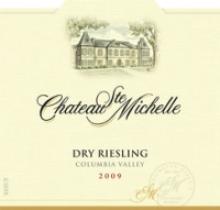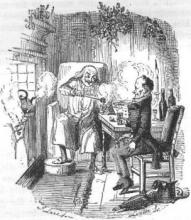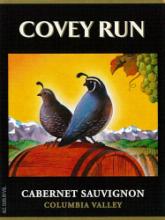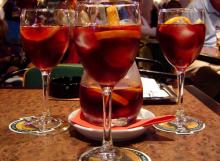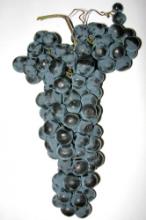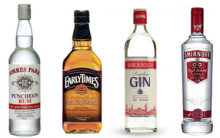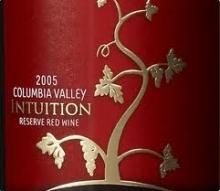Washington State Dry Rieslings
On the same day I discovered Pacific Rim Dry Riesling 2006 at an incredible price at the BGO, I also noticed that chain grocery stores in Washington state were featuring Chateau Ste. Michelle Dry Riesling 2009 for Thanksgiving. I thought it would fun to write a review that paired these wines. I like them both very much, and while they are ostensibly the "same" varietal from the same state, they are very different from each other. Now, granted it's a little odd to compare a 2006 to a 2009, but I'm not making qualitative judgments here—as I said, I like both of these dry Rieslings quite a lot.
The Chateau Ste. Michelle Dry Riesling 2009 is made largely from grapes grown in the Yakima Valley of eastern Washington. It's slightly sweeter than some dry Rieslings—most notably, it is just a touch sweeter than Pacific Rim's Dry Riesling. The aroma really does have a hint of ripe peaches, and there's something rather like apricot in the first sip of a properly chilled glass. A few minutes later there's something rather like green apple in the flavor, but still crisp and vibrant. Ste. Michelle's winemaker, Bob Bertheau, says this is his favorite wine to pair with oysters, and I can see why. The ABV is 13%. A bottle lists for about $10.00 but it's not unusual to find it on sale at about $8.00. It's the kind of wine that it makes sense to pick up two or three bottles to have on hand. I've not been even a little shy about my enthusiasm for Pacific Rim wines. Their Dry Riesling is exquisite. It's very much in the German style, and in fact is a blend made of 80% Washington Columbia Valley Riesling and 20% German Riesling from the Mosel, selected by Johannes Selbach. Pacific Rim doesn't subject their Riesling to oak, or malolactic fermentation, so the true qualities of the grapes are very apparent, and yes, that German addition does make a difference. As I mentioned, Pacific Rim's Dry Riesling is just slightly dryer than Ste. Michelle's; the ABV is also slightly lower at 12.5%. The traditional pairings for Riesling include seafood and mild cheeses; those work quite well, but I love Pacific Rim Dry Riesling with salmon, and with Asian dishes.There's an odd thing I've noticed from a lot of people, both online and offline, in that they seem surprised when they ask what wineries I like for Cabernet Sauvignon, or Riesling or what have you. They appear to want me to name a single wine, and a single winery. I like that there's room for individual differences in wines. I like that that I can try two perfectly lovely Washington state Dry Rieslings, and like both of them enormously, and comfortably recommend both of them. That said, the Bargain Grocery Store is currently having a killer deal on Pacific Rim Dry Riesling, and their lovely Pacific Rim Chenin Blanc, at $2.99 and $3.99 a bottle. If you like white wine, especially Riesling and Chenin blanc, go buy a case or three. You won't be sorry.
